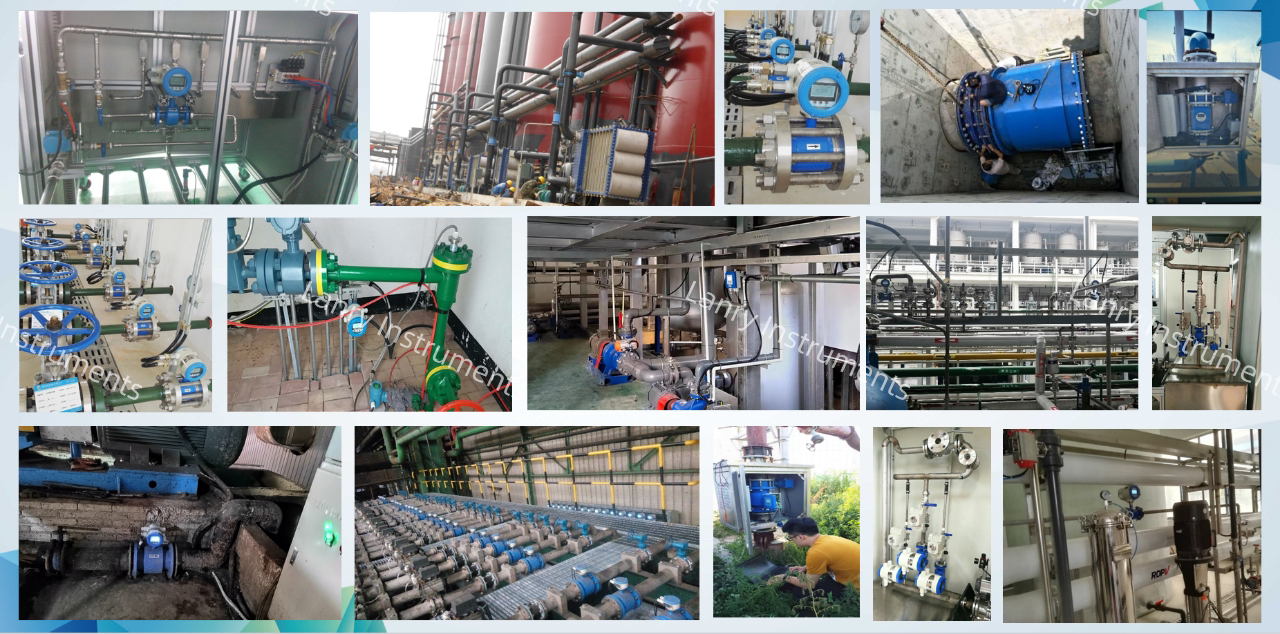Electromagnetic flow meters are widely used in industrial flow measurement due to their high accuracy, low maintenance, and lack of moving parts. However, they are not suitable for every application. In this article, we will discuss scenarios where electromagnetic flow meters may not be the best choice, helping you select the most appropriate flow measurement instrument.
1. The Measured Fluid Must Be Conductive
Electromagnetic flow meters operate based on Faraday's Law of Induction, which requires the measured fluid to have a certain level of electrical conductivity. Typically, the conductivity of the liquid should be greater than 5 μS/cm (microsiemens per centimeter); otherwise, the induced voltage will be too weak for accurate measurement.
Unsuitable Scenarios:
- Pure water, deionized water
- Petroleum products (e.g., gasoline, diesel)
- Highly insulating organic solvents (e.g., ether, benzene)
2. Not Suitable for Gas, Steam, or Completely Dry Solids
Since electromagnetic flow meters require the pipe to be fully filled with liquid for stable measurement, they cannot be used for gas, steam, or completely dry solid flow measurements.
Unsuitable Scenarios:
- Compressed air, natural gas flow measurement
- Steam flow measurement
- Dry powders or granular materials (e.g., cement, grains)
3. Corrosive or High-Temperature Fluids May Affect Sensor Lifespan
While electromagnetic flow meters can be equipped with corrosion-resistant linings (such as PTFE) and electrodes (e.g., Hastelloy, Tantalum), certain extreme environments can still affect the stability and longevity of the instruments. Strong acids, strong bases, or high-temperature fluids may accelerate sensor aging or damage.
Unsuitable Scenarios:
- High-concentration sulfuric acid, hydrofluoric acid, and other highly corrosive fluids
- Fluids with temperatures that exceed the material tolerance (e.g., >180°C)
4. Low Flow Rates or Liquids Containing Bubbles Can Impact Stability
Electromagnetic flow meters struggle to measure low flow rates (usually below 0.1 m/s) accurately because the induced voltage is weak and susceptible to interference. Moreover, if the fluid contains significant amounts of air bubbles, the signal can become unstable, affecting the accuracy of the measurement.
Unsuitable Scenarios:
- Very low flow fluid measurements (e.g., leachate, low-flow chemical dosing)
- Liquids with high gas content (e.g., freshly mixed chemical solutions, air-entrained wastewater)
5. Environments with Strong Electromagnetic Interference
Electromagnetic flow meters are sensitive to external electromagnetic interference. If the installation environment is close to large motors, variable frequency drives, or high-voltage power lines, it can disrupt the stability of the measurements.
Unsuitable Scenarios:
- Near substations or high-voltage power lines
- Strong magnetic field environments (e.g., large motors, welding equipment)
Conclusion: How to Choose the Right Flow Meter?
If your application meets the following conditions, an electromagnetic flow meter can be an excellent choice:
✅ The fluid is liquid and has sufficient conductivity
✅ The temperature and corrosiveness of the fluid fall within the meter's tolerance range
✅ The pipe is fully filled with liquid, and the flow rate is not too low
✅ The installation environment is free from significant electromagnetic interference

Post time: Mar-03-2025

